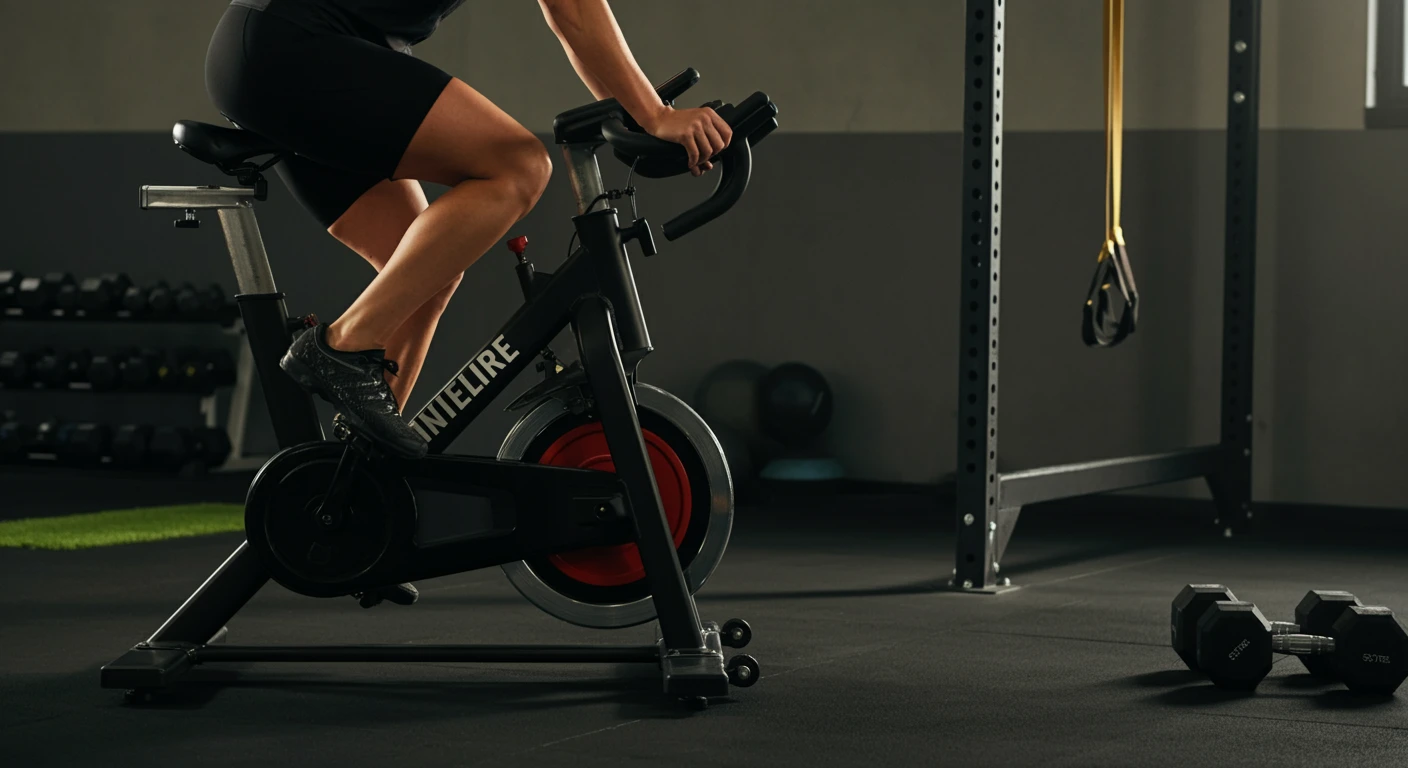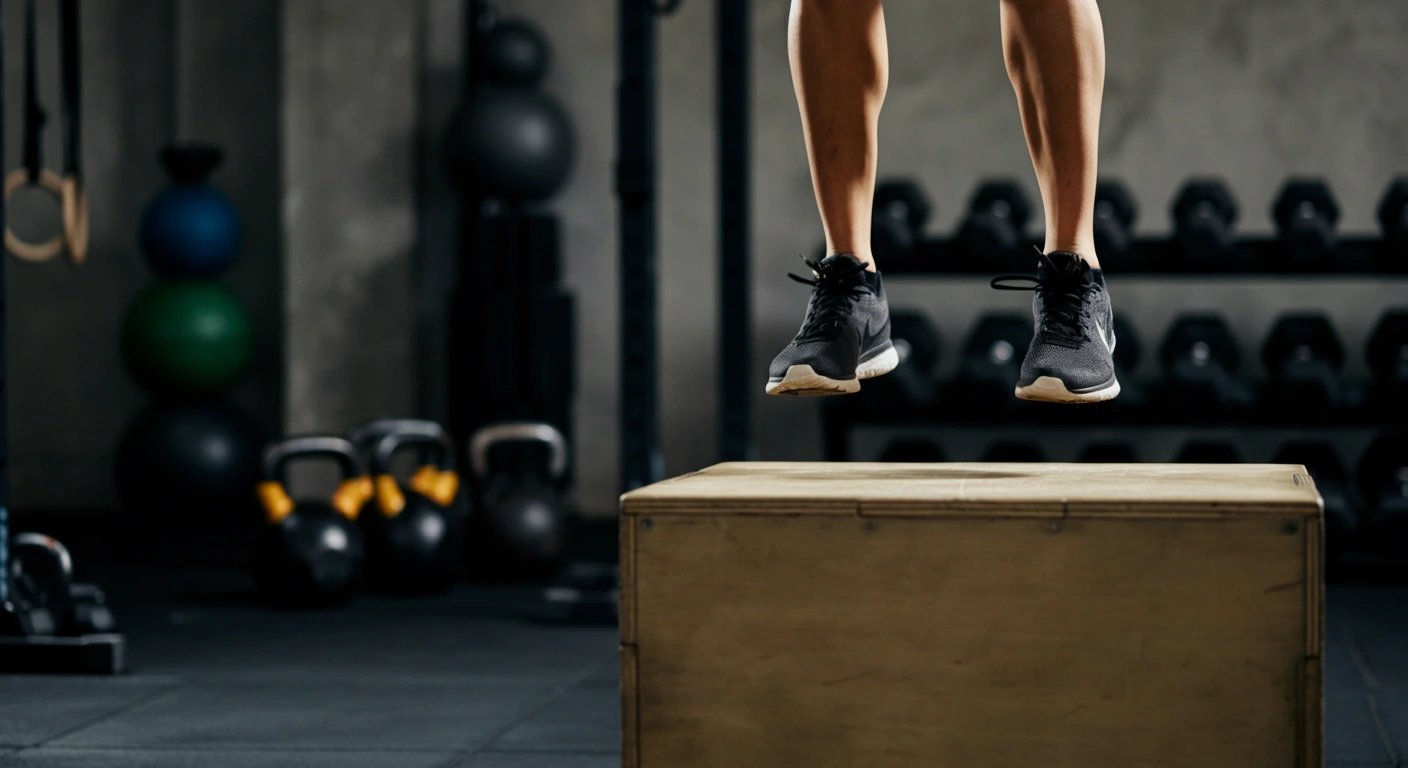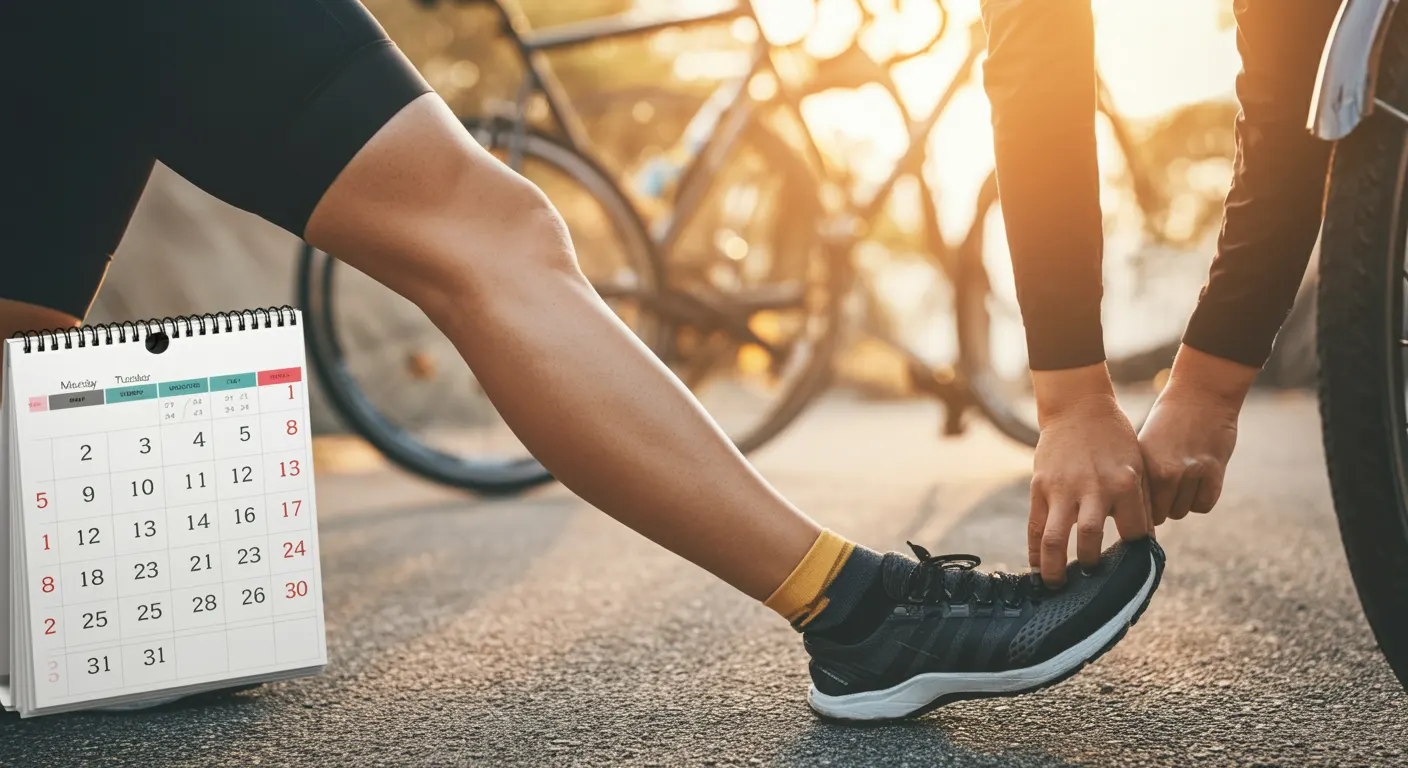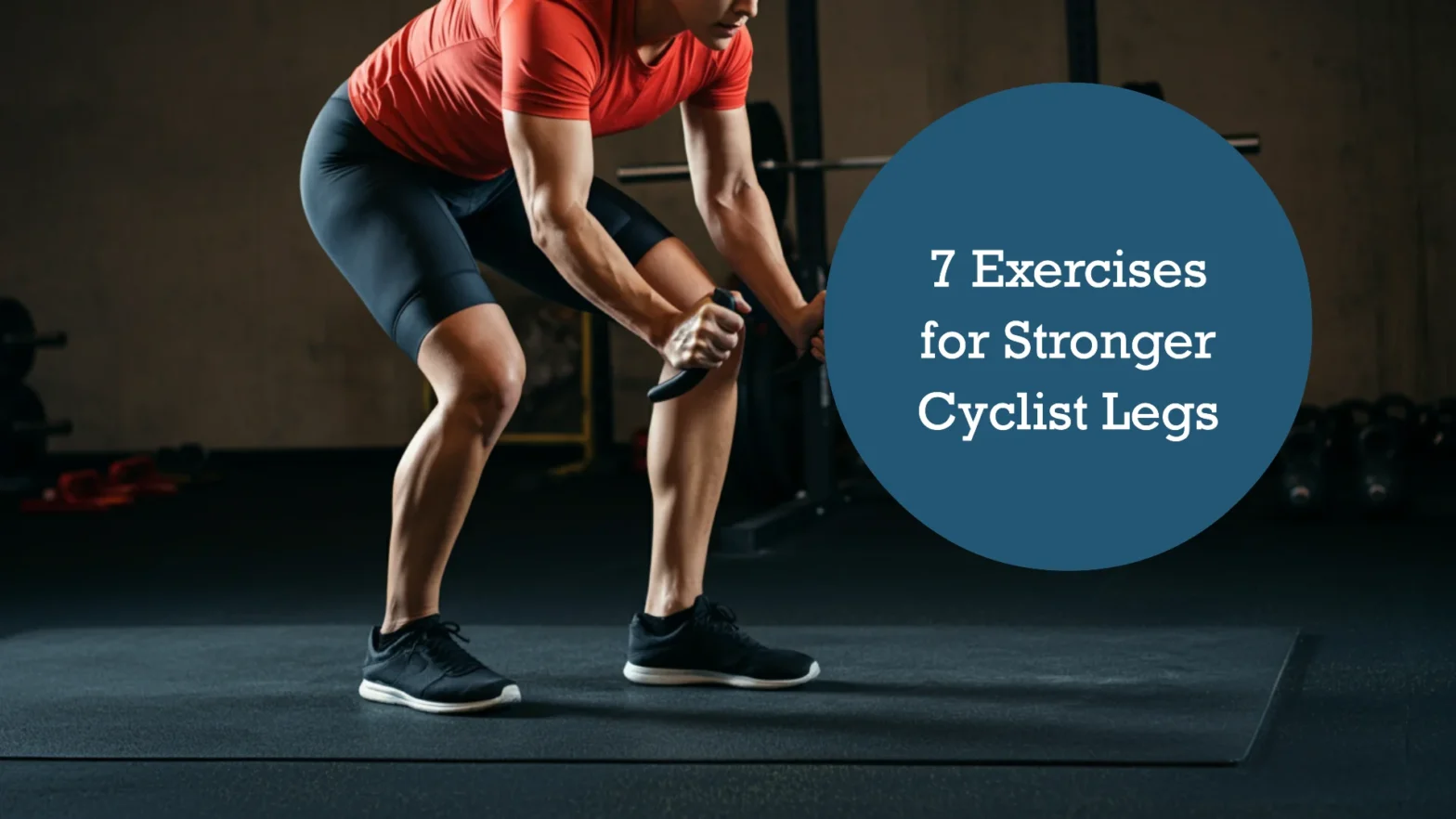For a complete leg workout, incorporate exercises like back squats, lunges, leg presses, and step-ups to target different muscle groups effectively. Focus on building strength and muscle balance in your legs for a well-rounded routine.
You can build cyclist’s legs with proper form, yoga squats for flexibility, and Romanian deadlifts for strength. Incorporate reverse lunges, one-legged pedaling, and glute bridges for a well-rounded leg workout.
This blog post will discuss essential leg workouts, advanced exercises for power, supporting exercises for stability, and workout frequency and schedule.
Cyclist Legs Workout: 6 Key Muscle Boosters

Incorporating specific leg workouts into your training regimen is crucial to improve your cycling performance and reduce the risk of injury. These exercises help build muscle strength and flexibility for efficient pedaling and long rides. Let’s dive into 3 essential leg workouts that every cyclist should consider.
Squats: The Foundation of Leg Strength
Squats are often called the king of all exercises for a good reason. They target your quads, hamstrings, glutes, and calves. The main muscles used in cycling. Here’s why squats are a must-do:
- Full Muscle Engagement: Squats engage nearly every muscle in your lower body by simulating sitting and standing, mimicking the cycling motion.
- Versatility: You can do them anywhere, with or without weights, making them a flexible addition to your routine.
- Core Strength: Squats strengthen the core, which improves stability on the bike and in the legs.
The Basics of Squats
- Stand with your feet shoulder-width apart.
- Straighten your back and bend your knees to lower as if sitting in a chair.
- Ensure your knees don’t go beyond your toes.
- Return to your starting position by pushing through your heels.
Deadlifts: The Powerhouse Movement
Deadlifts are incredibly effective for cyclists. They offer a comprehensive lower-body workout and focus on the back, glutes, and hamstrings, which are crucial for powerful pedaling.
- Posture Improvement: Regular deadlifting helps improve your cycling posture and reduce lower back pain.
- Strength Gain: It aids in building strength not just in your legs, but also in your lower back and grip valuable for long rides.
Mastering the Deadlift
- A barbell should be in front of you at a hip-width distance.
- You should bend your hips and knees and hold the bar with your hands shoulder-width apart.
- Keeping your back flat, lift the bar by straightening your hips and knees.
- Make sure you lower the bar in a controlled manner.
Lunges: Targeted Muscle Building
Lunges are another excellent exercise for cyclists. They focus on the quads, hamstrings, and glutes and mimic the pedaling action, which makes them especially beneficial.
- Balance and Coordination: Performing lunges enhances balance and coordination, improving bike control.
- Flexibility: They also improve flexibility in your hip flexors, which can help you achieve a more efficient pedaling motion.
Lunge Techniques
- Take one step forward while standing upright.
- You should bend both knees to about 90 degrees as you lower your hips.
- Make sure your front knee is directly above your ankle.
- Return to the starting position and repeat with the other leg.
Box Jumps: Leap Into Strength

A box jump is a dynamic exercise that can significantly improve your cycling performance. Here’s why they’re beneficial:
- Builds explosive power: Jumping onto a box from a standing position trains your legs to generate force quickly, mimicking the powerful pedal strokes needed in cycling.
- Box jumps work multiple muscles: They simultaneously engage your calves, quads, and glutes and target the entire lower body.
Bulgarian Squats: Single-Leg Mastery
For cyclists, developing equal strength in both legs is vital. Bulgarian squats are an excellent way to achieve this balance:
- Strengthens each leg: Focusing on one leg at a time ensures both legs develop equal power, which is essential for efficient pedaling.
- Addresses cycling demands: This exercise targets common muscle imbalances in cyclists, promoting better overall performance.
Supporting Exercises for Stability
Stability exercises enhance cycling efficiency and lower injury risk, enabling longer, more muscular rides. This section introduces 2 critical exercises targeting areas often overlooked by cyclists: glutes, hamstrings, and calves. Adding these to your routine can significantly boost performance.
Glute Bridges: Building Your Powerhouse
The glutes are your powerhouse when it comes to cycling. Strong glutes contribute to a more powerful pedal stroke and help maintain proper alignment and balance on the bike. A glute bridge exercise strengthens your core, glutes, and hamstrings, enhancing your pedaling efficiency.
- How to do it: Lie flat on your back with your knees bent and feet on the ground. Swing your hips up, squeezing your glutes at the top, then slowly lower back down.
- Benefits: This exercise targets the glutes and hamstrings, which generate power during pedaling. The exercise also strengthens the lower back and core, improving posture and preventing injury.
- Frequency: Complete 3 sets of 10-15 repetitions, 2-3 times weekly.
Calf Raises: Ensuring Endurance and Balance
The calves play a vital role in the final push of the pedal stroke, helping to propel you forward. Strong calves contribute to muscular endurance and balance, which are essential for long rides. A calf raise is a simple yet effective exercise to build strength in this area.
- How to do it: Stand with your feet hip-width apart, lift your heels off the ground, and rise to your toes. Hold briefly at the top before lowering back down.
- Benefits: Calf raises enhance endurance and promote muscular balance, reducing the risk of imbalances that can lead to injury. They also support ankle stability, which is essential for pedaling efficiently.
- Frequency: Perform 3 sets of 12-15 repetitions, 2-3 times per week.
Leg Workout for Cyclists: Frequency and Schedule?

When you’re passionate about cycling, getting your leg workouts right can make a big difference in your performance. We will help you understand how often you should train and provide a sample schedule to get the most out of your efforts.
Optimal Workout Frequency
Finding the right balance is essential to getting the best results from your cycling workouts. Doing leg workouts twice a week is ideal for most cyclists. Your muscles can recover and grow stronger between sessions.
- Twice a Week: Aim for two focused leg workouts each week.
- Rest Days: Ensure you have rest days in between for muscle recovery.
- Consistency: Stick to this routine for steady improvements.
Crafting Your Workout Schedule
Creating a workout schedule with strength training and rest can help you cycle better and faster. Here’s a sample weekly plan:
- Monday: Strength training for legs.
- Tuesday: Rest or light cycling.
- Wednesday: Cross-training or upper-body workout.
- Thursday: Second leg workout of the week.
- Friday: Rest day to recover.
- Weekend: Long rides at a moderate pace
Remember, listening to your body and adjusting as needed is critical. If you feel overly tired, taking an extra rest day is okay.
Conclusion
Your roadmap to building more robust, more resilient legs that will carry you over hills and dales like a pro. Integrating these targeted workouts into your cycling training regimen means you’re not just working towards more powerful legs.
You’re investing in a transformative journey to elevate your cycling experience. Remember, the path to improvement is paved with consistency. So, embrace these exercises, stick to the recommended frequency and schedule, and watch your strength, endurance, and overall performance reach new heights.
Let’s make those pedal strokes count and turn every ride into an opportunity to be your best self on two wheels. Ready, set, cycle your way to greatness.
FAQs
What Makes Cyclist’s Legs So Strong?
Cyclist’s legs are vital due to the repetitive motion of cycling. This motion targets key muscles, like the quadriceps, hamstrings, and glutes, that help build strength and muscle. The consistent engagement of these muscle groups through cycling helps build and tone leg muscles effectively.


